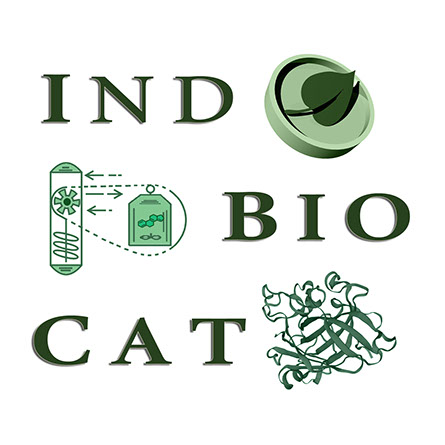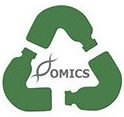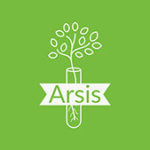
H.F.R.I., Greece 2.0, Basic Research Financing Action, Sub-action II, Funding Projects in Leading-Edge Sectors
According to the United Nations Environment Programme, almost 10 million tons of plastic waste end up in the ocean every year. The degradation and recycling of plastic waste that has been accumulating in the terrestrial and aquatic environment is of utmost importance for the transition to a sustainable mode of living. The central aim of EnZyReMix is to enable a paradigm step in the frame of a circular plastics economy, where, through developing innovative separation methodologies for mixed plastic waste, the derived monomers and oligomers can be chemically and biologically re-polymerised overcoming the obstacles for their mechanical recycling. The proposed mild bioprocesses will be based on novel biocatalysts presenting enhanced selectivity towards PLA/PET substrates obtained through a) the screening of established plastic-degrading enzyme libraries and b) the proteomic analysis of fungal strains isolated from plastic-contaminated areas. The studied polymers will be aged through their exposure to conditions that simulate different soil and sea environments, thus working closer to a “real” case-study. The most potent enzyme candidates will be structurally characterized, elucidating their mode of action and thus, suggest protein engineering approaches that could lead to biocatalysts with improved activity and selectivity on PET or PLA plastics. Finally, oligomers derived from the chemoenzymatic degradation of PET and PLA plastics will be submitted to Solid State Polymerization to be regenerated to new polymeric materials. The biotechnological upcycling of PLA and PET hydrolysates will be microbially realised towards the production of PHAs and bacterial nanocellulose, which are fully sustainable and can have equivalent properties to virgin fossil-based materials. EnZyReMix will expand the set of available biocatalysts and create bridges with the field of polymer technology, while serving as a benchmark for future plastic re- and upcycling of mixed plastic wastes.

Kemin Industries Inc., Iowa, USA
Corn arabinoglucuronoxylan (AGX) is an example of a notoriously recalcitrant type of hemicellulose, owing to its branched main chain xylan that bears various chemical substitutions on its β-1,4-linked xylose monomers. Its efficient and complete degradation poses great challenges, and it is widely accepted that variable enzymatic specificities— working in a synergistic manner— are required towards this end. Considering the recalcitrant nature of corn AGX, an alternative to defined mixtures of recombinantly expressed and purified enzymes would be the complete secretome of a fungal species that can naturally grow on relevant lignocellulosic materials. The objective of this project is to determine the protein components of the industrially relevant ascomycete Humicola sp. secretome, grown on different lignocellulosic carbon sources, and to identify the differentially expressed lignocellulolytic enzymes that are responsible for corn AGX degradation. Fungal fermentations, selected in vitro enzymatic assays, and simulated digestive system tests will inform the design of the quantitative proteomics analyses that will, eventually, elucidate the secretome-based AGX degradation.
Even though human-designed polymers allowed great advances in modern societies, they also represent a considerable threat to the biosphere. The feasible long-term use of such polymers in the face of growing demands for bioconvertible products is not guaranteed. This is mainly due to challenges in physico-chemical processing of these materials, for which humankind has not yet developed efficient bioconversion tools. Novel enzymes are urgently needed to promote research in bioremediation and upcycling, and PlastOmics aims to tackle this challenge. Fungi have developed enzymatic strategies for decomposing biopolymers such as lignocellulose, and thus isolates deriving from environments polluted with synthetic polymers may have evolved their enzymatic toolbox for this bioconversion. Noting the analogy of challenges (crystallinity, polymeric nature and insolubility) intrinsic to both lignocellulosics and plastics, our ambition is to identify fungi, and enzymes thereof, that can convert synthetic polymers widely used today, such as polyethylene terephthalate, polyethylene and polystyrene. In PlastOmics, we will screen a collection of uncharacterized fungi isolated from contaminated regions for their capacity to bioconvert said polymers. The most competent isolates will be characterized with bioinformatic analyses of multi-omic data (genomes, secretomes, etc) to unravel polymer degradation pathways and corresponding genes. These genes will be subsequently expressed in heterologous hosts and characterized both biochemically and structurally. PlastOmics will expand the set of available biocatalysts and create bridges with the field of polymers, while serving as a benchmark for future plastic degradation studies. Moreover, the project outcomes will enrich current knowledge on structural determinants of bioconversion enzymes, and thus suggest protein engineering approaches for development of a new generation of biocatalysts with improved activity and stability on plastics. PlastOmics aspires to resorb the time gap at the origin of the current enzyme-substrate landscape mismatch, drawing inspiration from natural recycling processes.
A key factor to efficient saccharification of lignocellulosic biomass (LCB) is the synergism between the main hydrolytic enzyme activities with Accessory Enzyme Families (AEFs). The discovery of such AEFs is crucial to the improvement of LCB hydrolysis, and ultimately to the cost effectiveness of any biomass-based industrial process, through the reduction of the required enzyme load. The aim of ARSIS project is the investigation of AEFs for the optimization of the currently used lignocellulolytic enzyme cocktails.
Within the frame of ARSIS, LCB residues representative of Greek agroindustrial byproducts, will be pretreated by different methods, for the construction of a suitable substrate library. Next, enzymes from the main AEFs selected after bioinformatic analysis will be studied in detail, as regards substrate specificity and synergistic activity with the major enzyme families implicated in LCB breakdown (cellulases, hemicellulases, etc.). Novel enzymes with significant potential in LCB breakdown will be fully characterized, biochemically and structurally, to gain insight into their mode of action. Thus, an AEF library will be constructed, and the potential of these enzymes to improve standard lignocellulolytic enzyme cocktails will be evaluated. The project will be implemented by the significant expertise of the Industrial Biotechnology and Biocatalysis group of NTUA in Biocatalysis, together with the collaborating group of Patras University offering their experience in Structural Biology. The construction of a library of lignocellulolytic AEFs will allow the optimization of LCB breakdown in simple sugars, customized to the available starting materials. The adaptation of pretreatment methods and enzymatic cocktails specifically on Greek agroindustrial residues is of outmost importance for the development of a sustainable and circular biomass-based economy in Greece, in line with the global effort to reduce the use of non-renewable fossil-based resources.
The Bio Innovation of a Circular Economy for Plastics (BioICEP) is a pan European-Chinese collaboration formed to reduce the burden of plastic waste in the environment. Different mixed plastic pollution environments are represented, with specific partners selected which have the expertise and facilities to carry out the necessary technical innovations. A number of innovative booster technologies are at the core of this solution accentuating, expediting, and augmenting mixed plastics degradation to levels far in excess of those currently achievable. Our approach is The Bio Innovation of a Circular Economy for Plastics (BioICEP) consortium is a pan European-Chinese collaborative formed to reduce the burden of plastic waste in the environment. The countries have been selected to represent different mixed plastic pollution environments, with specific partners selected which have the expertise and facilities to carry out the necessary technical innovations. Three innovative booster technologies are at the core of this solution accentuating, expediting, and augmenting plastics degradation to levels far in excess of those current achievable. Our approach is a triple-action depolymerisation system where plastic waste will be broken down in three consecutive processes: 1) mechano-biochemical disintegration processes, including a new proprietary sonic-green-chemical technology to reduce the polymer molecular weight of the base polymer to make it amenable to biodegradation; 2) biocatalytic digestion, with enzymes enhanced through a range of innovative techniques including accelerated screening through novel fluorescent sensor and directed evolution; and 3) microbial consortia developed from best in class single microbial strains, which combined leads to highly efficient degradation of mixed plastic waste streams. The outputs from this degradation process will be used as building blocks for new polymers or other bioproducts to enable a new plastic waste-based circular economy.




